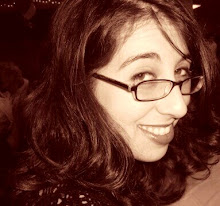[Also pulled from site archives. Conflict-specific notes accompanied every section, but were especially focused on the final "Twilight" discussion...unfortunately, these files were too corrupted to include. The following is the recovered, main text of the document.]
Few monsters are in such high demand in 2009 as the zombie. Video games, films, board games, and even survival guides are published on the approaching “zombie apocalypse”; despite being terrified of the walking dead, many people (myself included) devour zombie culture as quickly as it is generated. This fascination may certainly be part of the “post-apocalyptic...fantasies of liberation” (Dendle 54), as we play games of what-if and evaluate our homes for effectiveness at holding off a fantastical zombie attack. However, the living dead are also representative of our deeper fears of the unknown, science, safety, strangers, war, and our future; there is a need to examine them from a safe distance (preferably from the roof of a fortified safe-house with the proper weapons, supplies, power sources, and reading material).
The evolution of the zombie may be traced in three main stages: Dawn, the inception of the zombie legend in folklore and film, beginning in Haiti; Day, when the (Western) public’s full attention was first turned on zombies, and the mythos surrounding them began to take its own form; and Twilight, as the culture surrounding the zombie has become darker and more complex, and the outlook of human opponents more bleak. There are many films and cultural phenomena within and between each of these main periods, but considering the zombie’s lifespan in larger categories allows for a broader consideration of the legend.
The origin of the zombie lies in Haiti, in the Vodoun spiritual tradition. Vodoun (or “voodoo”), is a mixture of African-origin beliefs and rites with Catholic traditions, and is practiced widely among peasant and working-class peoples in Haiti (Métraux 15). Black magic, though not the guiding principle of Vodoun, is acknowledged within the religion; and it is here that the zombi lives. This creature is regarded as “the living dead—corpses which a sorcerer has extracted from their tombs and raised by a process which no one really knows” (Métraux 282). Enslaved by a ganga or hungan (priest/healer, or in black magic, a sorcerer), the zombi’s soul & consciousness are stolen; its will is supplanted by its master’s (Parsons 47). At this point in their development, zombis were nothing more than entranced (if deceased) humans—they did not eat human flesh, but normal food, minus anything containing salt (which was believed to wake them) (Métraux 283). However, in the removal of his will, one did cease to be human and became zombi. It was possible for a ganga to transform his zombi into any form—a stone, a cow, or a pig—if he desired. A transformed zombi might be killed and sold at market: “[i]t is zombi flesh, not human flesh, that is so disposed of” (Parsons 179). This misunderstanding of the cultural line between human and non-human led to the “alleged cannibalism [of Haiti, and] as a result several writers denounced Voodoo as a cannibal religion and from their writings Haiti came to be regarded as a savage country” (Métraux 16).
The zombi made its first appearance in Western film in White Zombie, a 1932 production starring Bela Lugosi as the dark sorcerer responsible for the undead. Pale and detached, the zombies here are simply the slaves of “Murder” Legendre (Lugosi), who, interestingly, is a white Voodoo practitioner. Still unmistakably strange and untrustworthy, his whiteness allows another European to approach him with the request to murder and reanimate a victim (Nell, an engaged woman coveted by Charles Beaumont, her casual acquaintance). This delineation of race also echoes the power structure of Haiti, where slavery has always been part of the national fabric the “zombie stands out clearly as symbol of the disempowered, the abject, the truly ‘native’” (Dendle 47). In one of the most memorable and terrifying scenes of the film, viewers are taken through Legendre’s sugar mill. Zombies work blankly, adding to their master’s power with no will of their own. Eerie within themselves, the creatures seem to represent an “alienation of the worker from spiritual connection with labour and from the ability to reap reward from the product of labour” (Dendle 46)—an issue pertinent both in Haiti and in an America dealing with the effects of the Great Depression. The value of “hard work”—a cornerstone of the American attitude—suddenly came into question, as the savings and rewards of lifetimes of hard work had disappeared in the collapse of the economy (American Cultural History). A zombie’s pure focus on survival and raw labor resonated with the anxieties and attitudes of the time, as the cause in both cases was perceived to be a powerful, exploitative, strange individual (Legendre, or fiercely capitalist ideals). In White Zombie, the exploited can only be saved by the faith of her fiancée and the aid of missionary Dr. Bruner; the United States’ rescue would also have to come from the people’s faith and external aid.
Continue reading Part II.
29 April 2009
Cultural Analysis: Zombie Evolution (?) (Part I of III)
Subscribe to:
Post Comments (Atom)

No comments:
Post a Comment